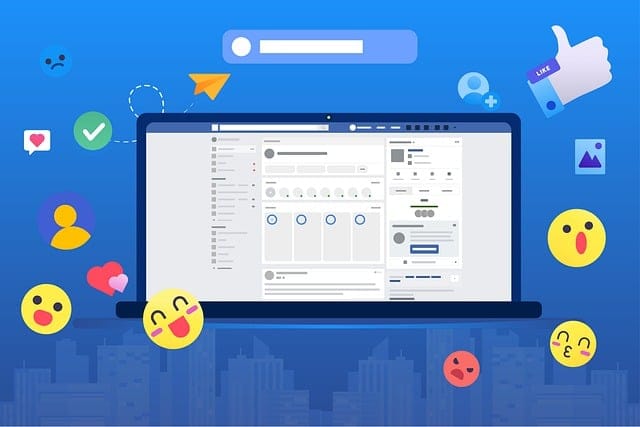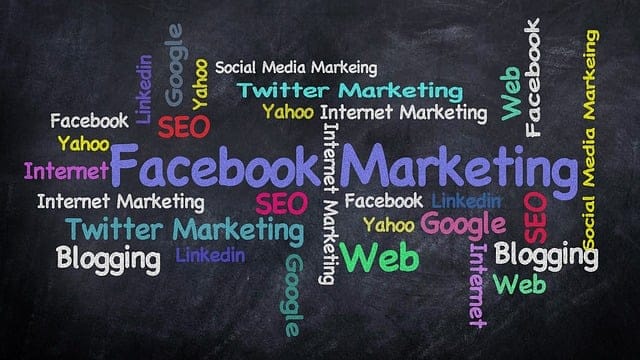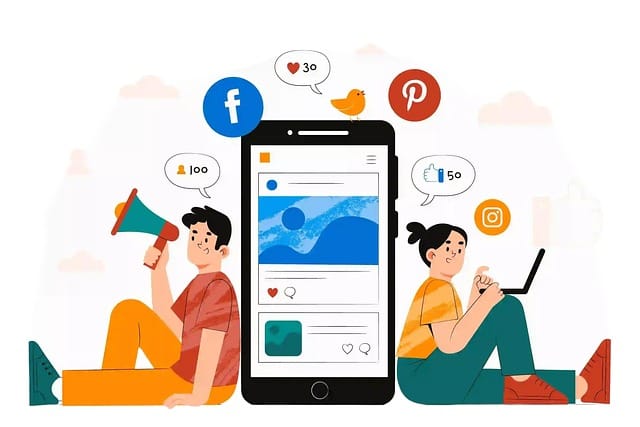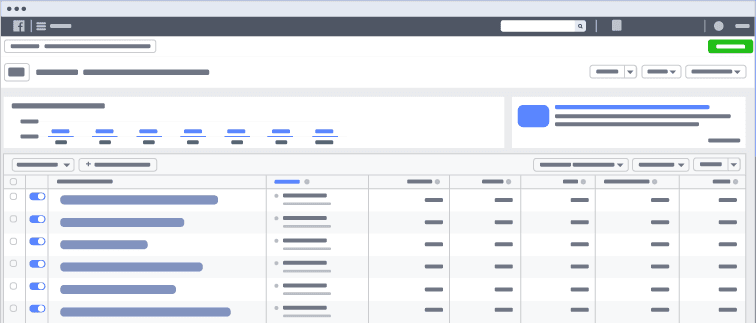Facebook Marketing | The Ultimate Facebook Strategy Guide for 2025
Learn how to build your brand and reach customers using Facebook marketing.

Facebook had approximately 3.35 billion daily active users as of December 2024. Businesses of all sizes worldwide use Facebook’s platform to market their products or services to potential customers.
With the right strategy, your Facebook page can become a powerful tool for product promotion and market penetration.
In this article, we’ll provide an overview of Facebook marketing, how it works, explore social media strategies for your brand, and show you how to advertise effectively on Facebook.
How Facebook and Instagram Ad Campaigns Are Created
| Step | Description |
|---|---|
| 1. Choose Your Ad Objective | Ad objectives help define your campaign’s purpose. Ask yourself: “What’s the most important outcome I want from this ad?” Examples: increase sales, app downloads, or brand awareness. |
| 2. Understand Your Audience | Ads perform best when tailored to your target audience’s interests, behaviors, and demographics. Consider these details when creating your ad. |
| 3. Select Ad Platform | Choose the right platform for your goals: Facebook, Instagram, Messenger, or Audience Network, using videos, images, or text. |
| 4. Submit Your Request | Set your daily or total budget and ad duration. After submission, your ad enters an auction to reach the right audience within budget. |
| 5. Measure Results and Learn | Monitor ad performance in “Ads Manager” and adjust campaigns based on analytics and test results to optimize performance. |
Essential Steps to Launch a Facebook Ad Campaign
- Log in to Ads Manager
Start by accessing Meta Ads Manager with your account. - Create New Campaign
Click “Create” and select your campaign objective (e.g., engagement, website visits, sales…). - Choose the Right Ad Objective
Select an objective aligned with your goals: brand awareness, website traffic, or conversions. - Name Campaign and Set Budget
Name your campaign for easy tracking, then set budget type (daily or lifetime) and spending amount. - Define Target Audience
Specify location, age, gender, interests, and behaviors. You can also use custom or lookalike audiences. - Select Ad Placements
Use automatic placements or customize where your ad appears (e.g., Facebook Feed, Instagram Stories…). - Create Ad
Choose ad format (image, video, carousel…), add headline, text, destination link, and ad media. - Review and Publish
Check all details, then click “Publish” to submit for Facebook’s review before going live.
How Facebook is Used for Marketing

Through Facebook marketing, you can use the world’s most popular social platform to promote your business and maintain brand presence. Your strategy may include both organic content marketing (unpaid) and traditional paid ad campaigns.
Businesses using Facebook and other social platforms often employ social media managers to develop and execute unique strategies tailored to their brand, audience, and business goals.
Types of Facebook Posts
There are various post types you can use to share your brand message, each serving specific marketing purposes:
- Text Posts: The simplest format, rarely used alone in Facebook marketing as posts with images, videos, graphics or links attract more attention. Typically used for personal updates or announcements.
- Photo Posts: Photographs can evoke strong emotions. High-quality images can showcase product colors, highlight menu items, or promote destinations.
- Video Posts: Videos help tell brand stories or share updates. According to Verbit analysis, 53.5% of videos are watched without sound (making captions essential!).
- Link Posts: Posts containing links to your website, blog, or news articles. Include CTAs that drive sales or brand awareness.
- Facebook Stories: Short-lived photo or video content appearing above news feeds for 24 hours, often cross-posted from Instagram.
Which Post Types Should You Use?

For all post types, use high-quality visuals, leverage holidays, and craft authentic brand messages. Since creating media assets takes time, plan ahead. Businesses often use social media calendars for organized scheduling.
You can publish all post types for free on your business page. Paid promotion through Ads Manager increases reach beyond existing followers.
How to Market Your Business on Facebook
To build your brand on Facebook, develop a marketing strategy delivering high-quality content that promotes your brand.
First, create a Facebook Business Page using your personal account.
Getting Facebook Page Likes
Once your Facebook Page exists, focus on gaining likes. Likes expand your network as posts appear in followers’ news feeds. More likes mean greater visibility.
Know your target audience to create relevant content. Find them organically by inviting friends to like your page, or through paid ads targeting specific demographics.
Building Your Brand with Facebook Ads
Since Facebook launched paid ads in 2007, they’ve become crucial for business marketing. With content overload, organic posts may get lost – paid ads help target specific demographics.
After establishing organic presence, focus on two paid ad types:
1. Boosted Posts: Amplify existing organic content’s reach.
2. Custom Ad Campaigns: Created via Facebook Ads Manager.
Boosting Posts

A boosted post is organic content you pay to show to more of your target audience. Simple to implement, it helps attract potential customers.
When boosting, specify:
- Audience: Target by demographics/location
- Budget: Total campaign spend
- Duration: How long the ad runs
Creating Facebook Ads
Unlike boosted posts, Facebook ads are created in Ads Manager. This tool offers extensive customization for campaigns on Facebook, Instagram, Messenger, or Audience Network, ideal for A/B testing.
Four ad types:
- Photo Ads: Static JPG/PNG images with 40-character headlines and 125-character text. Use space for strong CTAs.
- Video Ads: Tell stories (product making, testimonials) impactfully.
- Carousel Ads: Multiple scrollable images, ideal for e-commerce showcasing complementary products.
- Slideshow Ads: Like photo ads but displaying multiple images with 125-character text.
How to Use Ads Manager

Ads Manager’s user-friendly design guides you through options. First, choose objectives from three categories:
- Awareness: Brand reach
- Consideration: Engagement, app installs, video views, leads
- Conversion: Purchases, store visits
After selecting ad objectives, use Ads Manager to name campaigns, set budgets/schedules, define audiences, select placements, and finally publish.
For placements, choose Messenger, Facebook, or Instagram. Further customize via options like Facebook News Feed or Instagram Explore.
After publishing, track and optimize ads. Some businesses run A/B tests with small budgets before major campaigns.
How to Track Facebook Analytics
Evaluate ad success by monitoring impressions, click-through rates, conversion rates, and cost-per-conversion.
Three tracking tools:
- Ads Manager: Reports on ad performance (carousel views, website conversions).
- Events Manager: Analyzes visitor actions (“events”) like cart additions or purchases.
- Meta Business Suite: Shows data across Facebook/Instagram accounts (demographics, content engagement, ad performance).
Additional Facebook Marketing Tools

Helpful supplementary tools:
- Facebook Ads Manager App: Essential for mobile ad management.
- AdEspresso: Simplifies ad testing/optimization to boost ROI.
- Rebrandly URL Shortener: Link management platform that accelerates audience growth via Facebook Pixel integration.
- Birch: Automates Facebook/Instagram campaigns with AI optimization.
- Google Analytics: Alternative conversion tracking.
- Qwaya: Facebook/Instagram focused A/B testing and ad scheduling.
- Hootsuite Ads: All-in-one social media management.
- Canva: Easy drag-and-drop ad creation with Facebook-optimized templates.
- Driftrock: Premium ad management used by brands like BMW.
- Replug: Link retargeting to build custom audiences.
- Madgicx: AI-powered ad optimization for Facebook.
- Trello: Project management for marketing teams.
- Google Drive: Store assets and manage content calendars.
Avoiding Facebook Ad Campaign Issues
| Tip | Details |
|---|---|
| Follow Ad Policies | Review Facebook’s ad policies to avoid prohibited/misleading content. |
| Verify Ad Account Settings | Ensure valid payment method, no prior violations, and Business Manager connection. |
| Precise Audience Targeting | Use custom/lookalike audiences with carefully selected interests. |
| Optimize Landing Pages | Match pages to ads, ensure mobile-friendliness and fast loading. |
| Test with Small Budgets | Start small using A/B Testing before scaling. |
| Professional Ad Design | Use high-quality visuals with clear CTAs. |
| Monitor Performance | Track KPIs via Ads Manager and adjust accordingly. |
| Prepare Support Resources | Bookmark help center links and appeal rejected ads if compliant. |
What CTAs Mean in Digital Marketing
In digital marketing, CTAs (Calls to Action) direct users to take specific actions like:
- Purchasing products
- Contacting businesses
- Watching videos
CTA Examples:
- “Buy Now”
- “Sign Up Free”
- “Learn More”
Why CTAs Matter:
- Convert visitors to leads/customers
- Improve conversion rates
- Guide users on next steps
A/B Testing in Advertising
A/B testing compares two ad/landing page/email versions to determine which performs better in engagement/conversions.
How It Works:
Version A: Original
Version B: Variant
Advertising Applications:
- Which version gets more clicks?
- Which design drives more sales?
- Which headline attracts more attention?
Example:
- Version A: Product image with “Order Now”
- Version B: Same product with “Get Today’s Discount”
Conclusion
In today’s competitive digital landscape, Facebook marketing has evolved from an option to a strategic necessity for growth-focused brands. This guide covered campaign foundations – from precise goal-setting and audience understanding to smart ad execution and performance analysis.
Success hinges not just on budgets or content quality, but on mastering Meta’s platforms and continuously engaging with data. Don’t fear experimentation – often, small tweaks make the difference between average and exceptional campaigns.
Start now, implement these steps methodically, and transform Facebook into a powerful tool for building audience loyalty and professional digital presence.